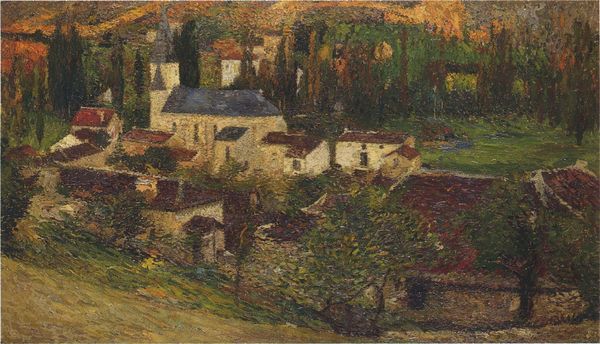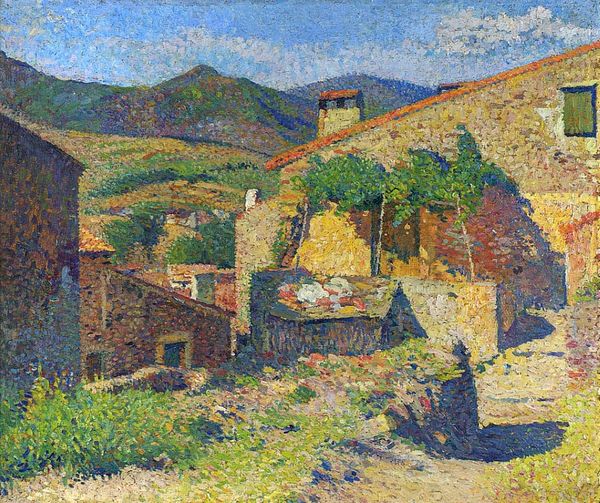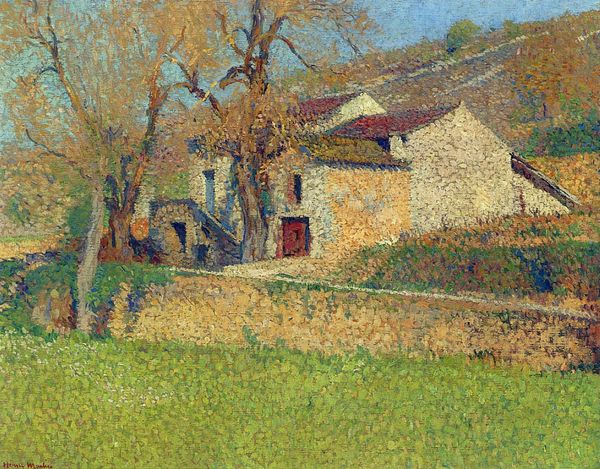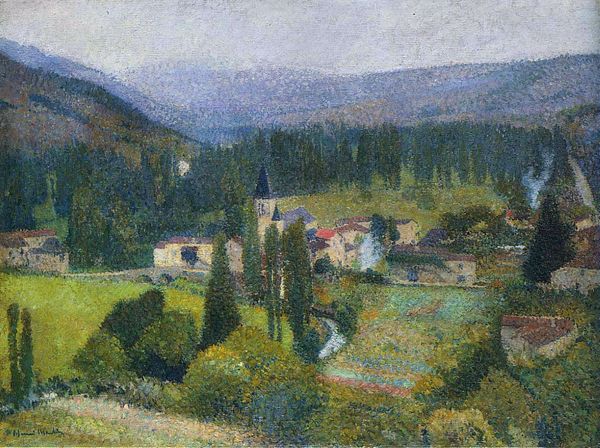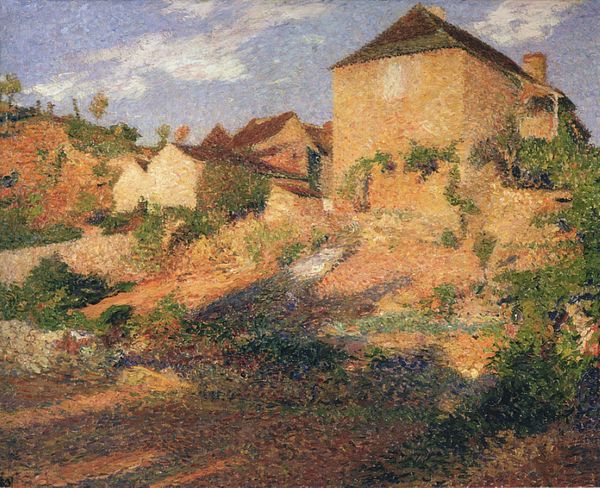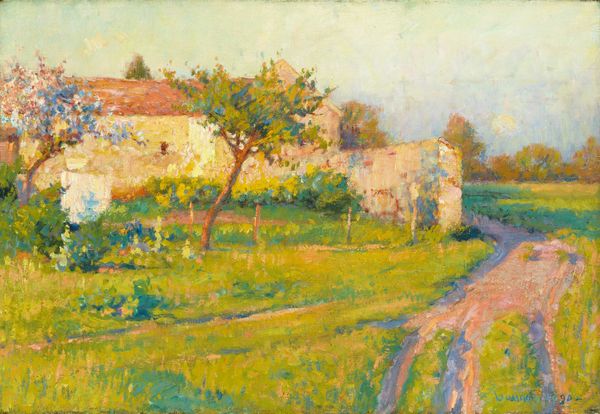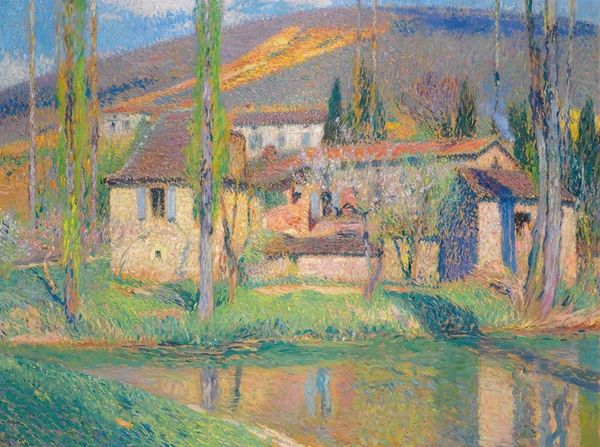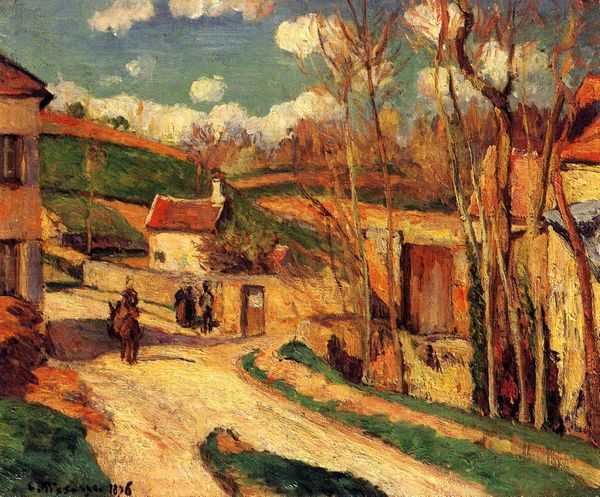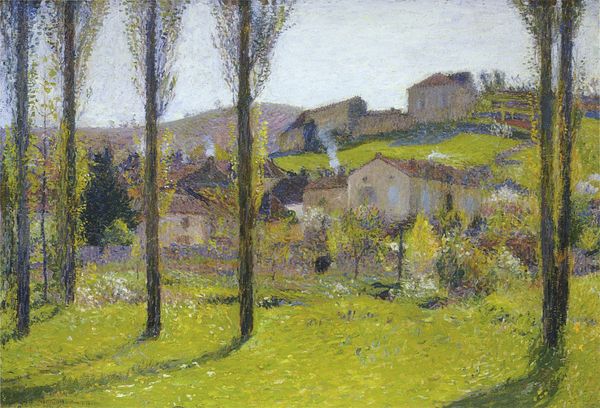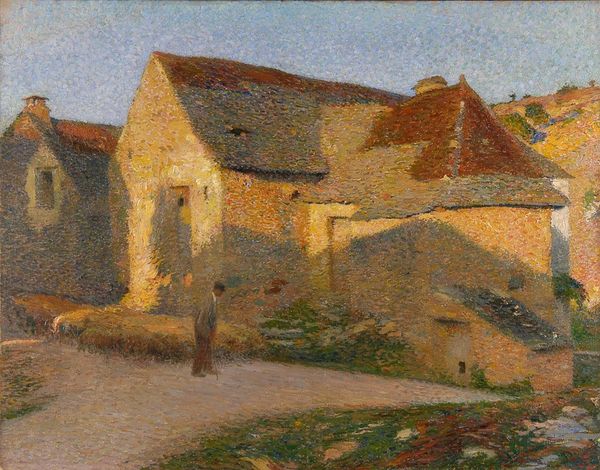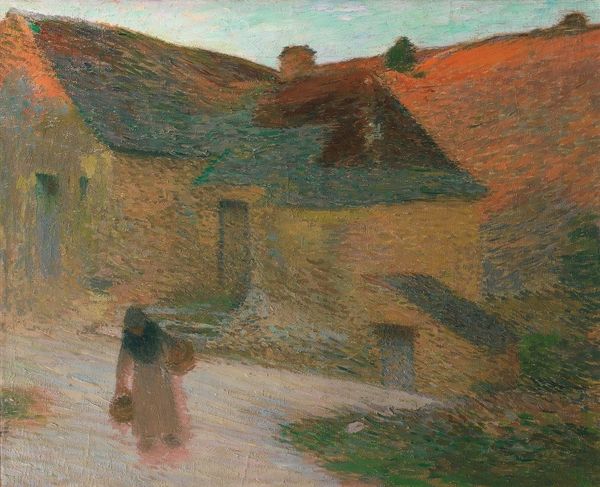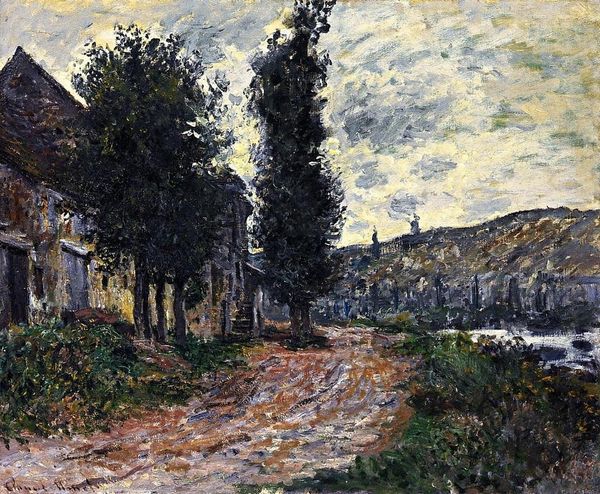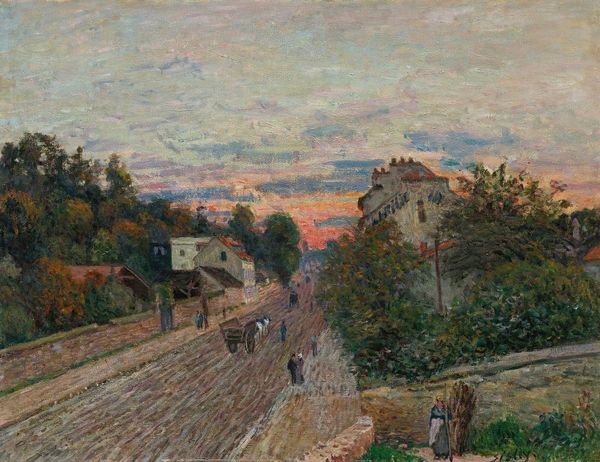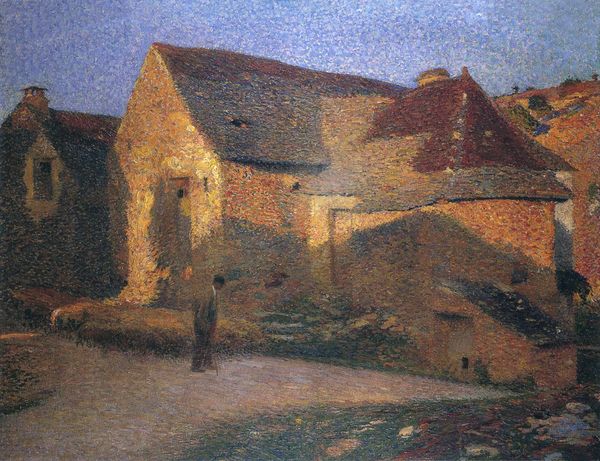
painting, plein-air, oil-paint
#
painting
#
impressionism
#
plein-air
#
oil-paint
#
landscape
#
impressionist landscape
#
figuration
#
oil painting
#
geometric
#
cityscape
#
post-impressionism
#
building
Copyright: Public domain
Curator: Standing before us is "Part of Labastide Bridge," a work attributed to Henri Martin. Though undated, its stylistic elements strongly suggest its creation within the Post-Impressionist period, rendered with oil paints. Editor: Well, hello there, sleepy landscape! I’m instantly getting a “Sunday afternoon, not a care in the world” vibe. All those blurry edges just sort of melt together in a comforting way. Like a warm blanket, or maybe a really good nap after too much wine. Curator: Indeed, Martin’s use of color and texture invites contemplation. He employs the technique of plein-air painting, a practice popularized by the Impressionists, where artists ventured outdoors to capture the fleeting effects of light and atmosphere. It definitely embodies the spirit of observation and spontaneity of the late 19th-century landscape tradition. Editor: Spontaneity is right! It's all little dots and dashes. You know, up close it feels like an explosion in a paint factory, but from a distance, those individual strokes cohere, almost magically, into… something! Like my brain trying to piece together a half-remembered dream. Curator: Precisely! The scene depicted offers a glimpse of rural France. Note the strategic positioning of those tall trees, their verticality punctuating the horizontality of the bridge and the buildings behind it. Martin isn't simply recording a scene, he is actively composing one, and carefully using visual elements to build out our perception. Editor: The buildings, bless them, practically dissolve into the hillside. Like they've been there forever and are just settling in for another century. It makes you wonder about the stories those walls could tell. Actually, what REALLY strikes me is how Martin makes you feel like you are standing *right there* beside the bridge, baking in the sun. I can almost smell the earth. Curator: Absolutely, the immediacy of the experience. His choice to leave brushstrokes visible allows us a view into his method and creative process, in ways that academic art of the time eschewed. It shows Martin’s interest in process and raw form of a painting and a deliberate choice to distance himself from conventional techniques of image-making. Editor: It’s so interesting hearing that context because to me it is really about capturing a feeling more than documenting anything literally real. It reminds me of childhood summers, those endless hazy days… Okay, now I’m getting sentimental! Curator: I think that response to Martin's atmospheric rendering of rural tranquility speaks to a longing for simpler times and the enduring appeal of nature, perhaps it will draw even our twenty-first century eyes back to appreciate the slower life. Editor: Yes, that's beautifully said. In a world that's always shouting, it whispers "take a breath." It’s the best type of art, the kind that sticks to your soul.
Comments
No comments
Be the first to comment and join the conversation on the ultimate creative platform.
